Modern cruise ships can host as many as 7,600 passengers on a single sailing. That’s a lot of people – and a lot of waste being produced.
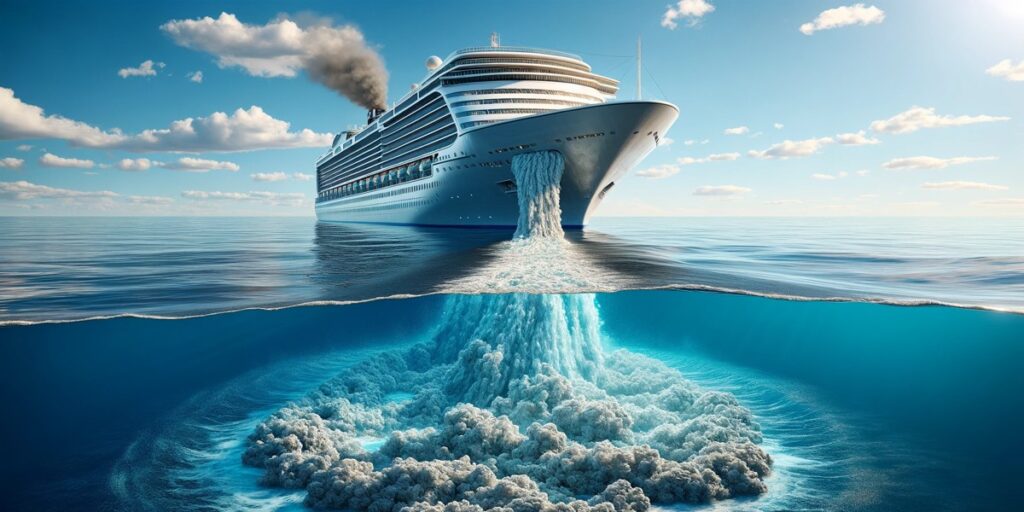
Think about it – ships aren’t like hotels, where there are plumbing systems connected to main sewer lines. So, what happens to all the sewage generated by a cruise ship?
Surely, it’s not just dumped in the oceans, right? Right???
Modern Cruise Ships Only Dump Treated Waste In Oceans
Cruise ships do dump sewage into ocean waters, but with modern ships, it will only be after that sewage has gone through extensive treatment to remove anything harmful. Certain waste waters are released without treatment but only those that haven’t come into contact with biohazardous materials or chemicals.
In the past, cruise ships would dump untreated waste into ocean waters, and there may be some older cruise lines that still do.
But modern cruise lines are wising up to their impact on the planet – and their impact on their profits if they don’t listen to the growing clamour from guests for ships to become more environmentally friendly.
Therefore, most of the big cruise lines don’t release any water into the oceans that hasn’t been treated onboard. All waste will be treated before it is released, and even then it won’t be released in environmentally volatile areas.
There isn’t a standard for where treated sewage water is released, as it depends on the waters where the ship is sailing. Different areas that have protection status can also have different rules – for example, there is a no-discharge zone covering the Strait of Juan de Fuca and Puget sound near Seattle in the US.
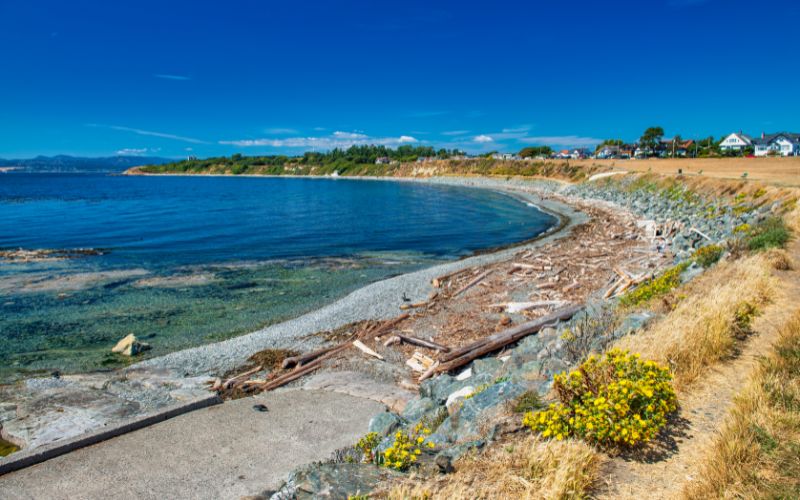
Generally, treated water is permitted to be dumped in many areas that aren’t too close to land, while untreated waste can still be dumped according to regulations, but it must be further from shore.
Despite this freedom to dump waste off-shore, modern cruise ships are equipped with the necessary treatment facilities to be more responsible with sewage.
Friends of the Earth – an environmental organisation – last posted a ‘report card’ for cruise lines and their environmental impact in 2024, which included details of which cruise lines had installed these advanced sewage treatment systems, and on how many ships. In it, it scored cruise lines such as Carnival, P&O and Costa as the lowest.
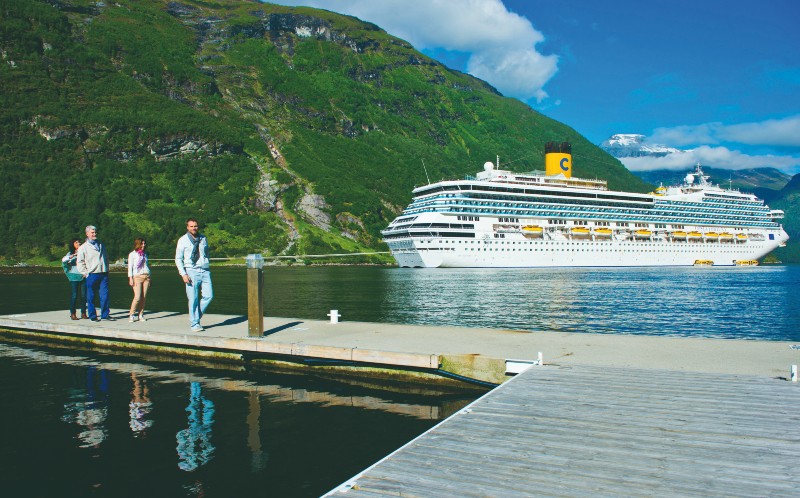
It’s worth remembering that the information is a little outdated now, and more ships are adding wastewater treatment centres when in drydock.
Cruise lines that have installed wastewater treatment facilities across their entire fleet already include:
- Celebrity Cruises
- Cunard Line
- Disney Cruise Line
- Holland America Line
- Norwegian Cruise Line
- Oceania Cruises
- Regent Seven Seas Cruises
- Royal Caribbean
- Seabourn
- Viking Ocean Cruises
- Virgin Voyages
Cruise Ships Get Rid Of Human Waste Safely
Cruise ships get rid of human waste by treating it extensively in an onboard treatment plant. Leftover solids are either processed once the ship returns to shore or incinerated onboard, while the treated liquids are then dumped in the ocean where suitable.
- Black water – this is the heavily contaminated water from toilets and urinals
- Grey water – this comes from drains, such as showers, basins and baths – it’s still unclean water, but it doesn’t contain harmful sewage
When we talk about human waste, we’re generally referring to black water. So, where does toilet waste go on a cruise ship? Not straight out into the water, don’t worry.
It used to be that waste would be dumped in the ocean but typically out at sea. But now, waste is sent to a treatment centre on the ship where the harmful materials are removed before the treated water is released.
It’s quite an intensive treatment process, which leaves water much safer to dump in the oceans.
Also, on grey water – while it doesn’t undergo the same level of treatment as blackwater, it will often be sterilised before it is released into the oceans.
There are some concerns over grey water though, particularly that which comes from the laundry facilities on the ships, as it could contain a high volume of microplastics.
How Cruise Ships Handle Sewage
Here’s the process that sewage goes through on a cruise ship in the onboard treatment plant:
1. Bioreactor Aeration Chamber
The first step for sewage on a cruise ship is to enter an aeration chamber. This chamber is filled with bacteria which work to break down some of the organic compounds in sewage that contaminate it, removing them from the wastewater.
2. Membrane Filtration System
After aeration, the wastewater is passed through a filtration system which will capture a lot of the solid impurities. These solids are passed back through the aeration chamber to further break them down – the aim is to remove as much of the contaminants at possible through bacteria.
3. Settlement Chamber
In the settlement chamber, the remaining solid materials are captured. This is done via settlement – the sludge-like solids sink to the bottom of the chamber and are captured for further re-processing, while the liquids move into the next stage.
At this stage, all solid materials will eventually be removed from the sewage, once they have been passed through the first three steps multiple times.
The solid matter will be a lot lower in volume than when it first entered the plant, and it will now be incinerated in a low-emission incinerator, minimising the release of harmful chemicals. It may also be stored until it can be disposed of properly when the ship returns to port.
4. Disinfection Chamber
The liquids that remain following the settlement chamber are passed into a disinfection chamber where UV radiation is used to remove the remaining pathogens and chemicals. At this stage, the water is almost as pure as tap water, although you still shouldn’t drink it, since actual cruise ship tap water has to go through stringent, certified tests.
5. Storage Tank
Once the sewage has been completely processed, it will enter a storage tank until it can be disposed of, either on land or released into the sea at a safe distance from the shore.
Food Waste Is Processed In An Environmentally Friendly Way
As much of 30% of the food served on cruise ships is wasted. This is usually a result of the guests ordering more dishes than they can eat, or loading their plates heavily at the buffet and not finishing everything.
A large cruise ship typically has 1.5 tonnes per day of food scraps to dispose of.
Each galley has a grinder that purees the food waste. Then, at night, when the ship is out at sea, the food waste is discharged into the ocean below the waterline. Fish and other marine animals often follow the ship, feeding on the scraps.
Sometimes, food waste collected on a cruise ship is treated through a dehydrator to remove moisture, and then once all liquid has been removed it is incinerated. This is considered the safest, most environmentally friendly option for cruise ship food waste.

Burning anything is never ideal, since you’ll always be releasing some form of harmful gasses. But then neither is dumping anything into the ocean, as it’s not a natural diet for marine animals.
To reduce the environmental impact of food waste (and the cost) cruise ships take great strides to minimise the amount of waste they produce.
It’s not just about how food waste is disposed of, too, but also how it can be reduced in the first place. After all, wasted food is wasted money from a cruise line’s perspective, so anything they can do to reduce the amount of wastage being created not only helps the environment but also helps their bottom line.
Some of the methods used to tackle food waste include:
1. Getting Rid of the Midnight Buffet
Just like skeet shooting, and hitting gold balls off the side of the ship, the midnight buffet is an old cruise line tradition that you don’t see on ships anymore.
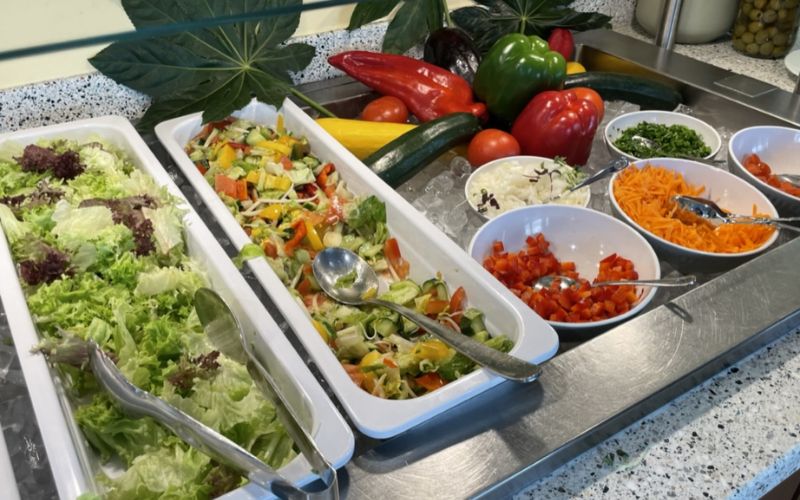
It’s a nice idea – being able to pop along for some midnight snacks and choose from a wide range of foods – but realistically most guests were either asleep or still full from dinner, and so the buffets would just create unnecessary waste.
Cruise ships do still have buffet restaurants but they tend to close between 8 pm and 10 pm on most ships. For those who get hungry later, there’s usually somewhere to grab a bit to eat later on, whether that’s a café or a small section of the buffet with a few sandwiches and cakes.
2. Using AI to Manage Menu and Food Production
Some cruise lines including Carnival and Royal Caribbean have started to work with artificial intelligence technologies to help manage menu options and food production, in a bid to reduce wastage.
AI is still an emerging tech but if cruise lines can use it to predict when certain meals are going to be needed and to manage the freshness of ingredients, there could be some fantastic strides in the reduction of food wastage.
3. Charging for Additional Courses
In most cruise dining rooms you can order as many dishes as you wanted. Stuck between two or three options on the menu? You can just order them all.
Of course, this often leads to increased wastage. Not only is one person now having multiple meals, but they’re less likely to finish them all, so there are more leftovers generated.

Some cruise lines have started to introduce a nominal charge for additional entrees, either for the second or starting at the third. The charges tend to be small but it will help to deter guests with bigger eyes than stomachs from unnecessarily ordering extra meals.
Beyond wastage, cruise lines are also looking at other environmentally-friendly technologies that could be better for the environment and either be more profitable in future, or ensure that people are still happy to cruise.
Fuel technology advancements, such as Royal Caribbean’s investment in biofuel, is one of the prominent areas of research.
How Much Waste Is Dumped by Cruise Ships?
It’s worth clarifying that typically human waste refers to toilet water, but there are different types of water on a cruise ship that must be disposed of…
It’s estimated that an average cruise line dumps around 30,000 gallons of sewage into the ocean each day. Larger ships will be above this average, but specific figures are never released.
As a guide, a four-minute shower uses around 8 gallons, while a toilet flush uses just under 2 gallons. So for 3,000 guests, that’s one toilet trip and one four-minute shower each day – it’s not as much as it might sound.
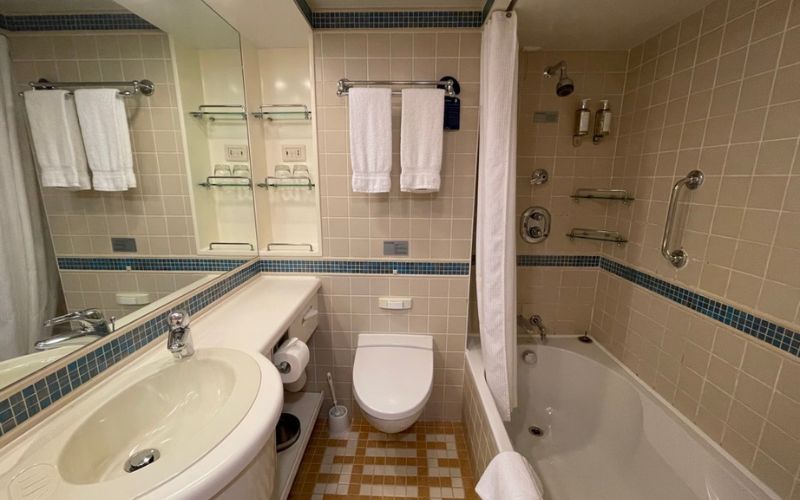
Bear in mind as well that this average includes the water that has been treated. It’s not 30,000 gallons of contaminated sewage.
And to put the figure into perspective, the world’s oceans contain around 352 quintillion gallons. So if there are around 250 cruise ships producing 30,000 gallons of sewage every day, that’s 2.737 billion gallons each year.
Or, as a percentage of the world’s water, it’s 0.000000000008%.
A drop in the ocean.
Final Word
Cruises are not a beacon of environmentally responsible transport, but cruise lines are working hard to improve their standards, in terms of waste and other ways they can cause pollution.
They have to – people are becoming more conscious of the impact we’re having on the planet, and any industry which doesn’t try to improve will only be left behind in future.
The more widespread use of sewage treatment and food waste reduction on ships will massively cut the impact that cruises have on the oceans, but more research and investment are needed if cruise lines want to move towards net zero emissions and being more friendly to the environment.
Related Topics
- Cruise Myths Debunked
- The 11 Worst Ports of Call For Cruise Ship Tourists (Just Stay On The Ship!)
- Do Sharks Swim Around Cruise Ships?
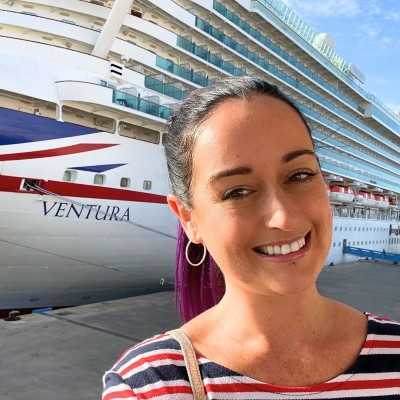
Jenni Fielding is the founder of Cruise Mummy. She has worked in the cruise industry since 2015 and has taken over 30 cruises. Now, she helps over 1 million people per month to plan their perfect cruise holidays.

Good article thanks. The article seems to be silent on scrubber waste and its treatment. Also, the fish feeding on food waste made it sound like a good thing. I thought bio rich effluent was also bad, causing algae blooms and dead zones. I am not an expert but I think these are valid concerns. Also, the cruise industry spends millions on lobbying against regulation, that doesn’t add up with them “working hard” in my mind.